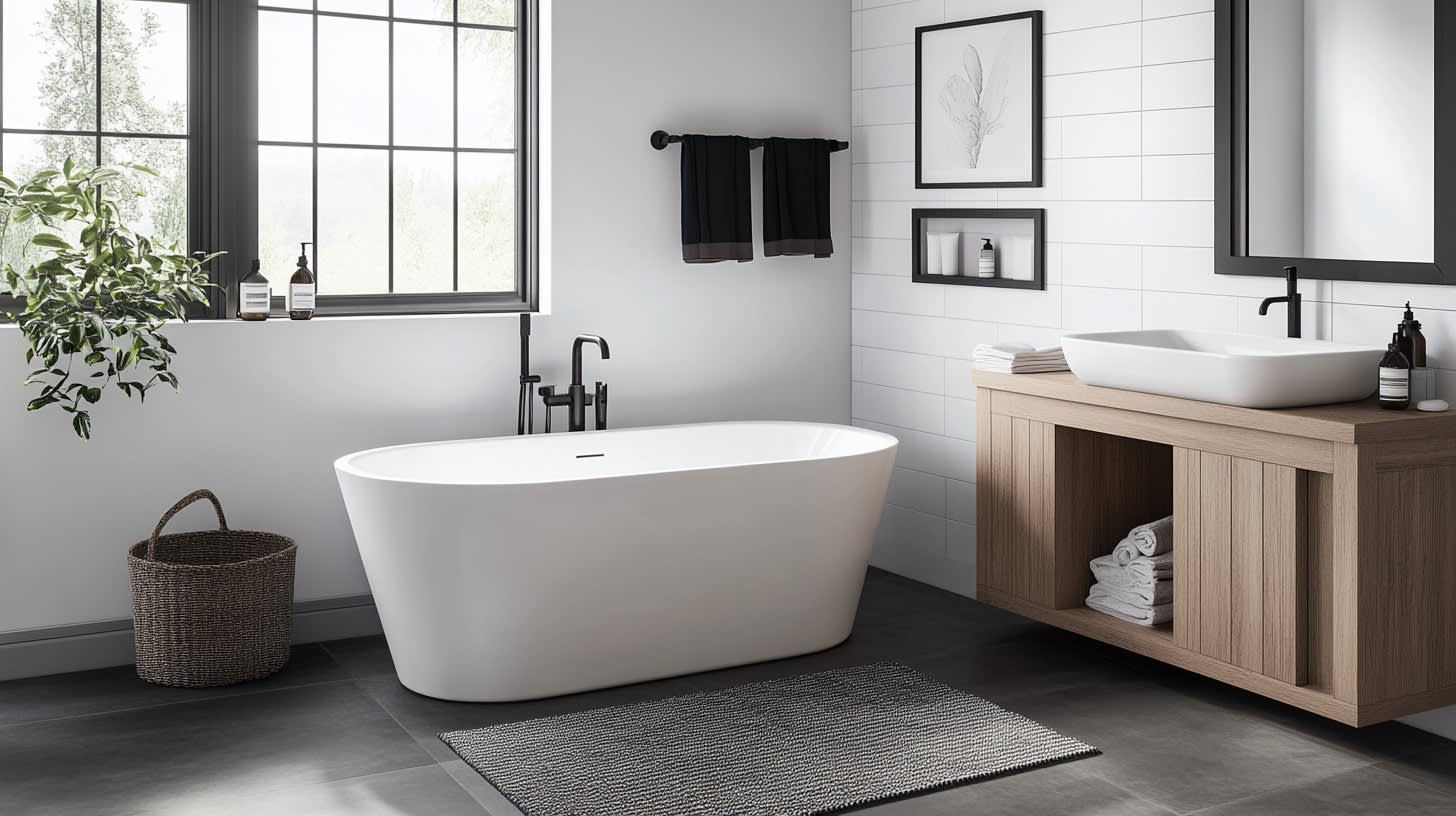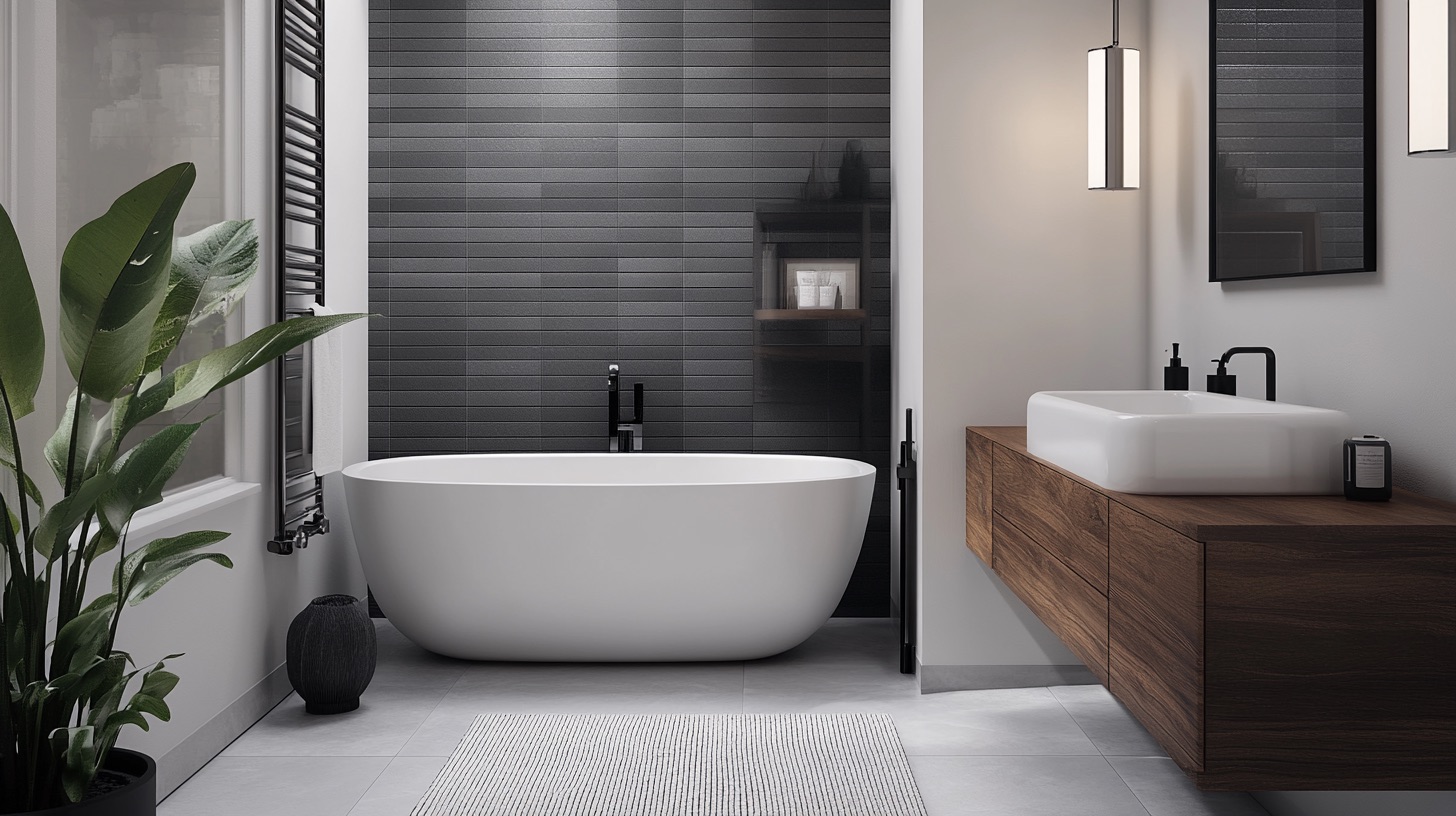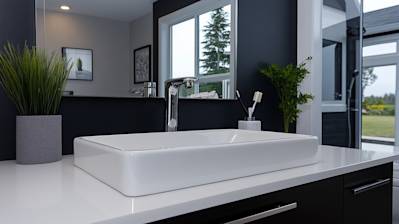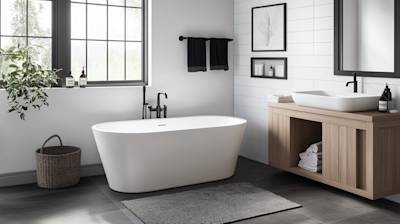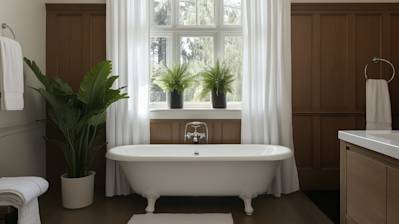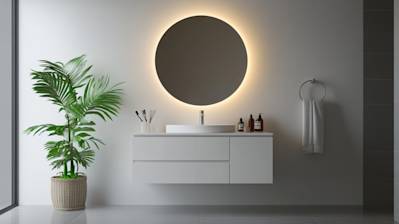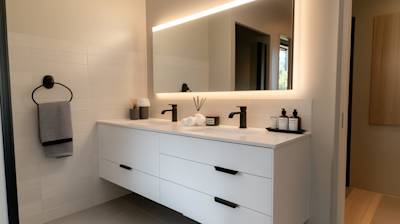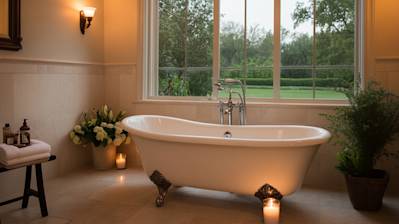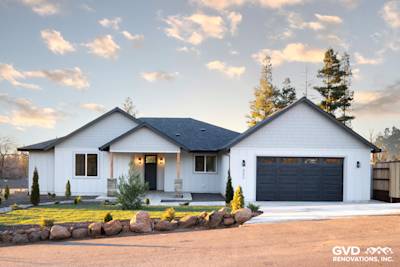Bathing should be more than just a mundane daily routine. It's time to reimagine it as a luxurious bathing experience that leaves you feeling rejuvenated and refreshed. One way to transform it is by introducing a free-standing bathtub into your bathing sanctuary. Let’s dive deeper into why homeowners across the globe are raving about free-standing tubs.
What is a Free-Standing Tub?
As the name implies, a free-standing tub stands independently. Unlike built-in tubs, which require walls on three sides, a free-standing tub can be placed anywhere, offering flexibility in bathroom layout.
The Varieties of Free-Standing Tubs
There's a beautiful range of free-standing tubs available, each offering a distinct aesthetic and feel:
-
Clawfoot Tubs: These classic beauties have remained evergreen thanks to their timeless charm. They often feature extravagant sculpted feet, keeping the tub aloft.
-
Slipper Tubs: With one or both ends raised to provide perfect head and back support, slipper tubs are the epitome of bathing comfort.
-
Pedestal Tubs: Where clawfoot tubs have four individual feet, pedestal tubs stand on a single plinth or base, ensuring a sleek look.
-
Japanese Soaking Tubs: Deep and compact, these tubs are designed for relaxing vertical soaks, perfect for smaller bathrooms.
Styling Your Bathroom with a Free-Standing Tub
A free-standing tub is an outstanding feature that can instantly elevate your bathroom decor. Here are a few styling tips:
- Go Minimalistic: A tub with clean, simple lines brings a chic, modern look. Complement it with a neutral palette for a Zen-like sanctuary.
- Create a Classic Look: Opt for a clawfoot or slipper tub for a vintage-inspired bathroom. Finish with gold or bronze fittings for a timeless feel.
- Bring in the Drama: Use a bold-colored tub as a focal point in a monochrome bathroom or add excitement with patterned tiles and luxury light fittings.
Material Options for Free-Standing Tubs
Free-standing tubs come in a variety of materials, each providing unique benefits:
- Acrylic: This high-gloss, lightweight material is a popular choice. It's easy to mold into various designs, resistant to scratches, and retains heat well.
- Stone Resin: A blend of natural stone and resin, it creates a tub that’s solid, durable, and excellent at maintaining water temperature.
- Cast Iron: Hard-wearing and resistant to chips and scratches, it keeps the bathwater hot for longer. However, it's the heaviest option.
- Fiberglass: This cost-effective lightweight option requires regular maintenance to prevent cracking or color fading.
TIP: Choosing the right material depends on your budget, maintenance willingness, and aesthetics preference.
How to Choose the Perfect Free-Standing Tub
To ensure your free-standing tub becomes a favorite spot in your home, consider these crucial factors:
- Size: Measure your bathroom space to decide the dimensions of the tub. Also, consider who will be using it to choose the depth appropriately.
- Style: The design of the tub should align with your overall bathroom decor.
- Material: Consider how much maintenance you're willing to put in, and your budget.
- Features: While basic tubs simply hold water, some models come with features like jets for hydrotherapy, spill-proof edges, and self-cleaning systems.
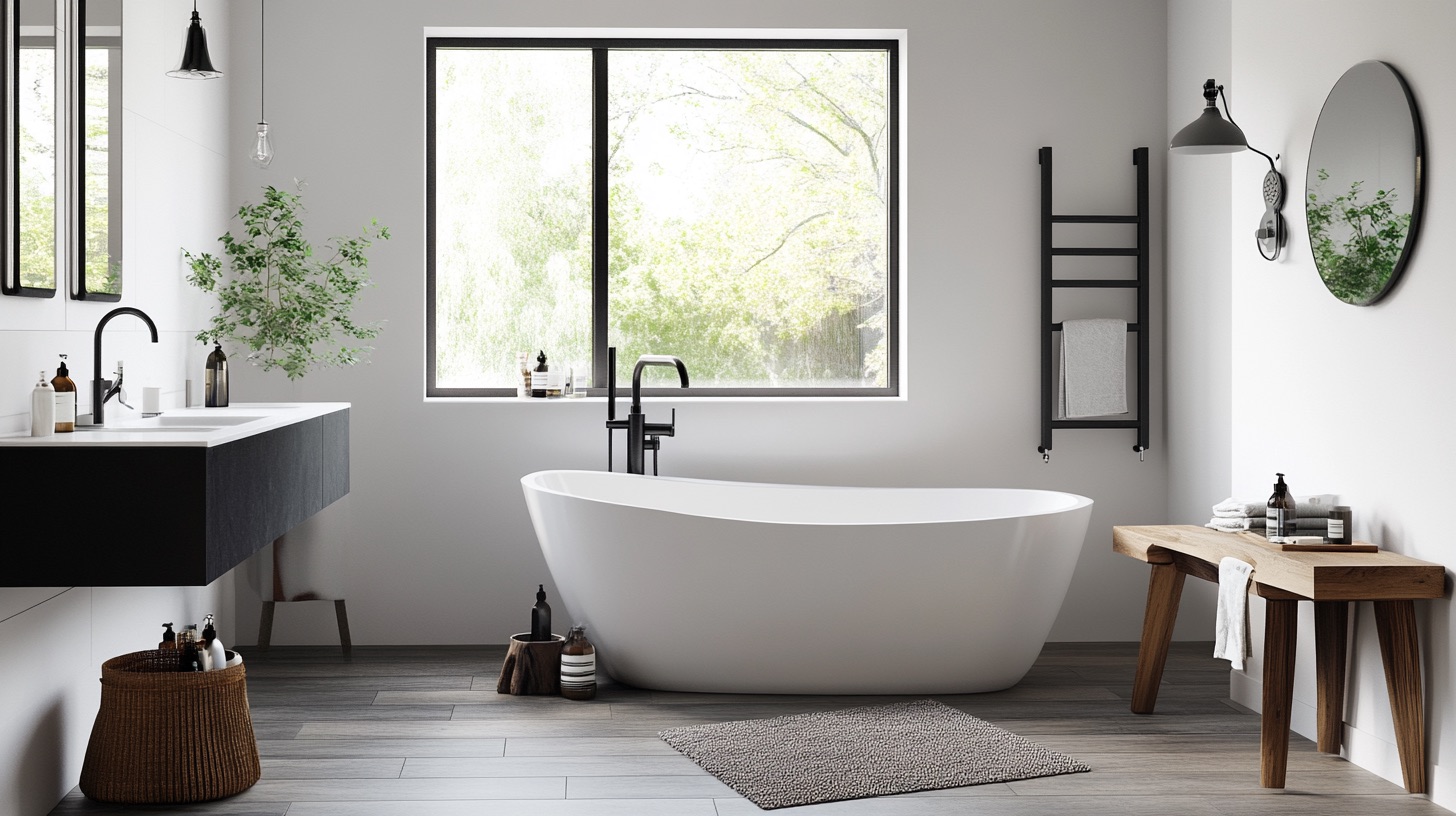
Frequently Asked Questions about Free Standing Tub
Are free standing tubs comfortable?
Comfort can be subjective and highly dependent on the individual. However, free standing tubs are generally praised for their deep and roomy design. Their design promotes relaxation, allowing you to fully submerge and unwind. As with any tub, it's essential to check the dimensions and ensure it has the depth and length for your comfort.
Can a free standing tub be moved?
Although they are not meant to be moved regularly, free standing tubs can indeed be relocated if necessary. This feature allows for substantial flexibility when changing your bathroom design or layout. However, bear in mind that any changes in the tub's location will also require reinstallation of the plumbing.
How much space does a free standing tub require?
The space needed depends on the specific size of the tub, but generally, they require a considerable amount of room. Keep in mind that in addition to the tub's physical dimensions, there needs to be ample space for entry and exit. Always consider these factors during your bathroom planning process.
What is the weight of a free standing tub?
The weight of a free standing tub will vary based on its size, material, and whether it is an air or water jetted model. On average, a free standing tub can weigh anywhere between 100 to 200 pounds without water. Once filled, the weight can increase substantially. This aspect should be considered when installing on upper floors.
Can a free standing tub be used in a bathroom remodel?
Yes, a free standing tub can be a great addition in a bathroom remodel providing that there is enough space for it. It can act as a bathroom centerpiece, leading to a luxury spa-like ambiance. Planning the new layout carefully is crucial, as the tub will need both water supply and drain connections.
How are free standing tubs cleaned?
Free standing tubs can be cleaned with non-abrasive cleaners or mild detergent and warm water. Avoid using abrasive cleaners as they can scratch and damage the tub surface. For tough stains, a solution of vinegar and baking soda works effectively. Remember to clean the tub regularly to maintain its finish.
How long does a free standing tub last?
With proper care and maintenance, a free standing tub can last 15 to 20 years or more. Factors such as the type of material the tub is made of, its usage, and how well it's maintained can all affect the lifespan.
Are there different styles of free standing tubs?
Yes, free standing tubs are available in an array of styles and shapes to match any bathroom decor. They range from classic clawfoot tubs, to modern oval or rectangular designs. There are also a variety of materials, each with their own aesthetic and maintenance requirements.
What is the typical cost of a free standing tub?
Free standing tubs can vary greatly in price due to size, material, brand, and other factors. On average, you can expect to pay anywhere from $500 to several thousand dollars. Consider your budget and what you value most in a tub to make the best choice for your space.
Can a free standing tub have a shower?
Though traditional free standing tubs are not designed with showers, it's not unusual to fit a shower over a free standing tub. This setup requires careful planning to ensure that the space can adequately handle water splash and wet floor scenarios.
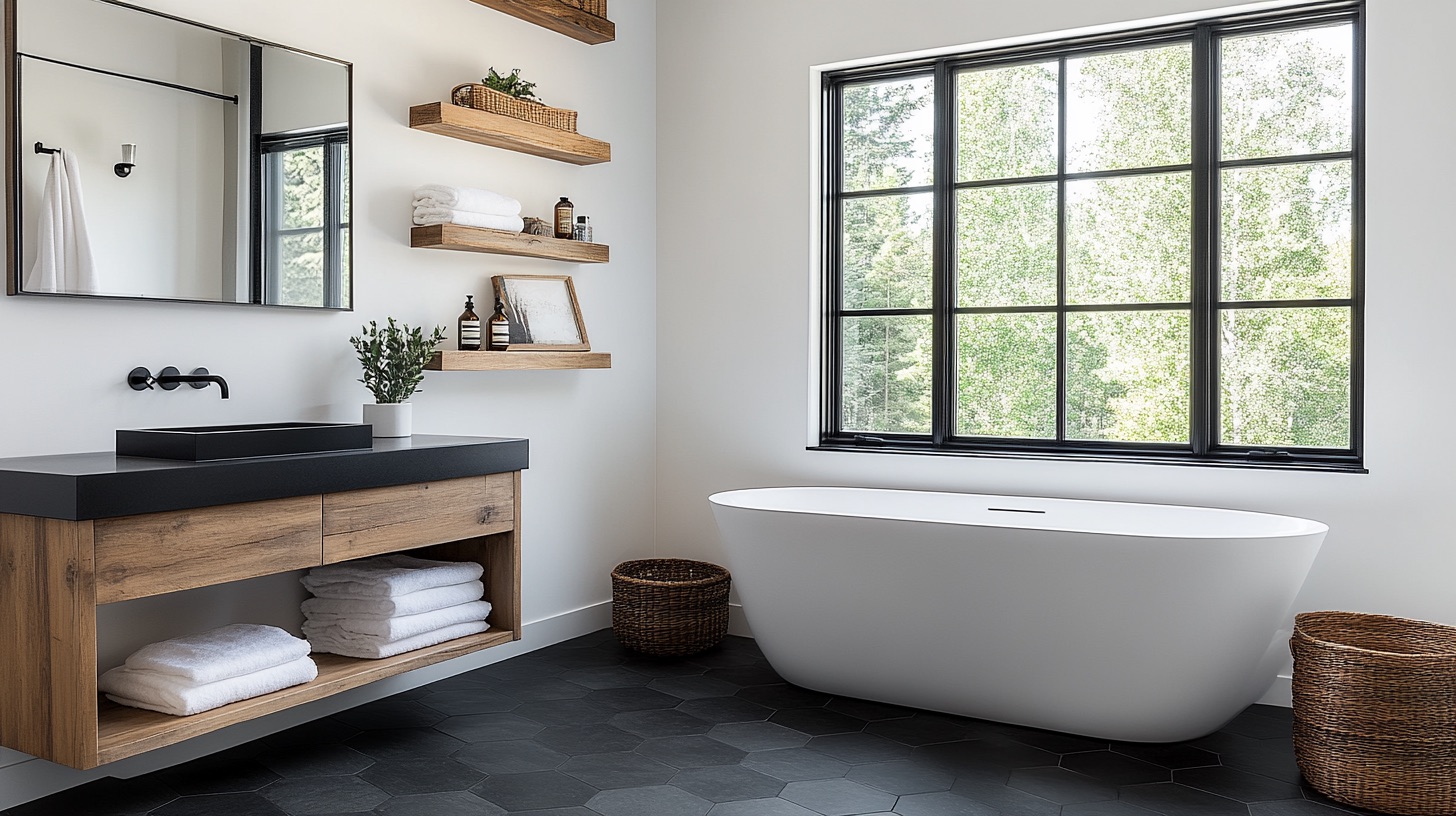
Pros of Free Standing Tubs
Aesthetics
One of the primary advantages of free standing tubs is their aesthetic appeal. Unlike built-in tubs that are often obscured by walls or shower doors, free standing tubs are visible from all sides. This can create a beautiful focal point in your bathroom, adding an element of luxury and sophistication to the space. Also, they come in an array of styles, shapes, and materials, such as vintage clawfoot tubs, modern oval tubs, or rustic copper tubs, to suit any bathroom decor.
Easy to Install
Unlike built-in tubs, which need to be installed against a wall or within a tub surround, free standing tubs can be placed almost anywhere in the bathroom. They only require a water source and a drain, making the installation process quicker and less complicated. This flexibility can be a significant advantage when designing or remodeling a bathroom.
Comfort and Relaxation
Many free standing tubs are designed for deep soaking, which can provide a more relaxing and luxurious bathing experience than traditional built-in tubs. Some models even come with massage jets, providing a spa-like experience right in the comfort of your own home.
Cleaning and Maintenance
With their exposed sides and typically smooth surfaces, free standing tubs can be easier to clean than built-in models. There are no corners or crevices where dirt and grime can hide. This can simplify your bathroom cleaning routine and help maintain a healthier, more hygienic space.
Cons of Free Standing Tubs
Space Requirements
While free standing tubs can be easily installed in any part of the bathroom, they typically require more space than built-in tubs. This can make them impractical for small bathrooms. Additionally, because they are designed to be a focal point, they often don't work well when crammed into a corner or small space where they can't be fully appreciated.
Cost
Free standing tubs generally cost more than built-in models. Not only is the tub itself often more expensive, but the installation can also be costlier because it often involves moving or installing additional plumbing.
Lack of Storage Space
Unlike built-in tubs, which often come with built-in shelves or ledges for soap, shampoo, or other bath products, free standing tubs usually don't have these features. This lack of storage can be inconvenient, particularly in a bathroom with limited space for additional storage furniture.
Heat Retention
Many free standing tubs, especially those made of materials like acrylic or fiberglass, do not retain heat as well as built-in tubs, which often have insulating materials surrounding them. This means the water in free standing tubs can cool faster, potentially making your bath less comfortable over time.
Safety Considerations
Free standing tubs, particularly those with high sides for deep soaking, can be more difficult to get in and out of than traditional built-in tubs or showers. This can be a safety concern, particularly for children, older adults, or anyone with mobility issues. Also, without a wall or a tile surround for support, slipping and falling could be more of a risk with these types of tubs.
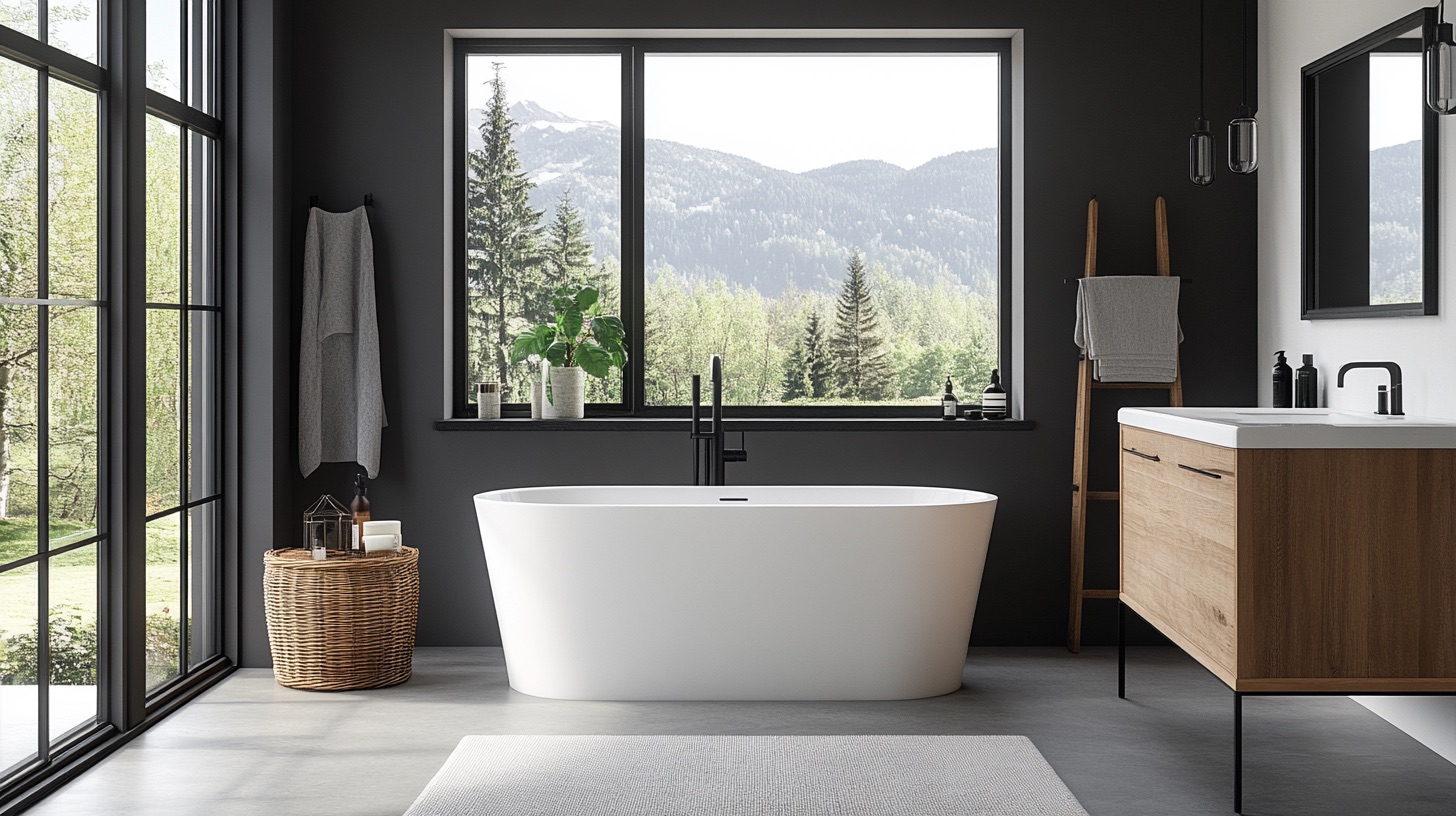
Myths and Misconceptions about Free Standing Tubs
Myth 1: All Free Standing Tubs are the Same
Believe it or not, this is a common misconception many people have about free standing tubs. However, free standing tubs come in various sizes, shapes, materials, and styles. The common vision might be a classic clawfoot tub, but there are modern styles, Japanese soaking tubs, and even oval or rectangular units available. Each of these options provides a different bathing experience and aesthetic to match your bathroom design.
Myth 2: Free Standing Tubs are Expensive
It's easy to believe this myth, especially when most images you see of free standing tubs are in luxury bathrooms. However, the cost varies significantly depending on the tub's material and design. While there are certainly high-end, expensive versions, there are also affordable options in the market. It's about doing your research and shopping around.
Myth 3: Free Standing Tubs are Only for Large Bathrooms
While free standing tubs can be the perfect centerpiece for a large, luxurious bathroom, they can also work well in smaller spaces. The key is to choose the right size and style. Some models are designed specifically to fit comfortably in compact bathrooms while still providing the elegance and comfort of a freestanding tub.
Myth 4: Installation is Difficult and Expensive
While installation is a little more complicated than a built-in tub because of the need for plumbing to be routed to the tub location, it's not necessarily more expensive or difficult. In fact, there is often more flexibility in where you can place a freestanding tub because it's not confined to a wall. Keep in mind that professional installation can ensure the job is done right, minimizing future maintenance issues.
Myth 5: Free Standing Tubs are Hard to Clean
Sub-myth 5.1: Free Standing Tubs are More Difficult to Clean than Regular Tubs
Some believe that freestanding tubs are harder to clean because they can be accessed from all sides. It's actually the opposite - because you can walk around the whole tub, it's easier to reach every part of it for cleaning.
Sub-myth 5.2: Free Standing Tubs are Dust Collectors
Another assumption is that the beneath area of the tub collects dust and is hard to clean. This can indeed be a valid concern with certain clawfoot tub designs. However, many modern freestanding tubs have solid bases, eliminating this issue. If you do opt for a clawfoot design, using a long-handled duster makes cleaning underneath a breeze.
Myth 6: Free Standing Tubs are Less Comfortable
The comfort of a bathtub depends primarily on its design, not its installation method. So, the idea that freestanding tubs are inherently less comfortable than built-in versions is a misconception. Some people find freestanding tubs more comfortable because they offer more flexibility in positioning, and many models have ergonomically designed angles for comfortable bathing.
Myth 7: Free Standing Tubs are Not Kid-friendly
The belief that free standing tubs are not suitable for homes with kids is mostly based on concerns about safety and usefulness. However, with proper supervision, they're no less safe than built-in tubs. Of course, it's essential to choose a tub with a non-slip surface to ensure safety, and remember - kids usually find these tubs fun to splash in!
Myth 8: Free Standing Tubs aren't Durable
This entirely depends on the material and build quality of the tub. High-quality freestanding tubs are constructed to last for decades. The assumption that freestanding tubs aren't as durable probably comes from their elegant, refined appearance, which can give the impression of delicacy. But don't be deceived - these tubs are built to withstand regular use.
Remember, when busting myths and misconceptions, the key is to do research and ask questions. This allows you to make informed decisions about whether a freestanding tub fits your needs, preferences, and lifestyle.
Summary
A free-standing tub can redefine your bathroom's aesthetics and give it a luxurious, spa-like ambiance. Plus, these tubs are easy to install as they don't need to be built into a corner or against a wall. With a variety of designs, from vintage to contemporary, you can easily find a free-standing tub that perfectly matches your taste and decor.
Getting a free-standing tub is more than just about style and comfort. They also add value to your home which is a major bonus if you ever plan on selling. These tubs have become a symbol of luxury and owning one could be a selling point for potential buyers.
Lastly, remember that while a free-standing tub may seem like a hefty investment initially, the long-term benefits are worth considering. It's easy to clean, incredibly durable and comfortable. These tubs are not just about having a beautiful bathroom. They're about enhancing your bathing experience altogether. You deserve that level of comfort and relaxation at home.
About GVD Renovations & Remodeling
GVD Renovations & Remodeling is your local Roseville, CA expert for home renovation and remodeling. With years of experience under our tool belt, we pride ourselves on transforming houses into homes that reflect your unique style and needs. Whether you're considering refreshing the exterior of your home or dreaming of a revamped kitchen, our passionate, skilled team is ready to make your home improvement dreams a reality. So, say goodbye to 'average' and say hello to the home you've always wanted with GVD Renovations & Remodeling.
Tags: Bathtub, Bathroom renovation, Space-saving,




